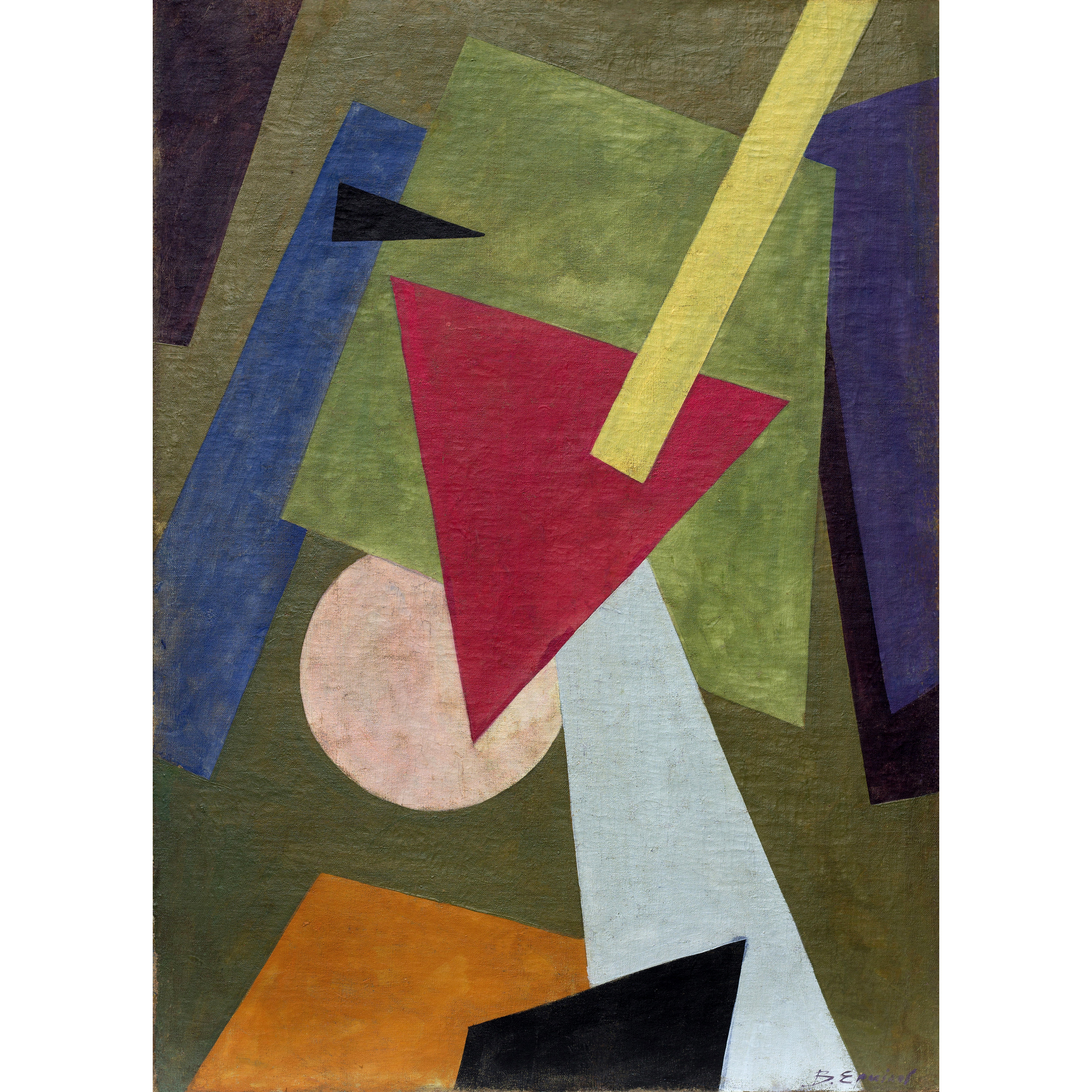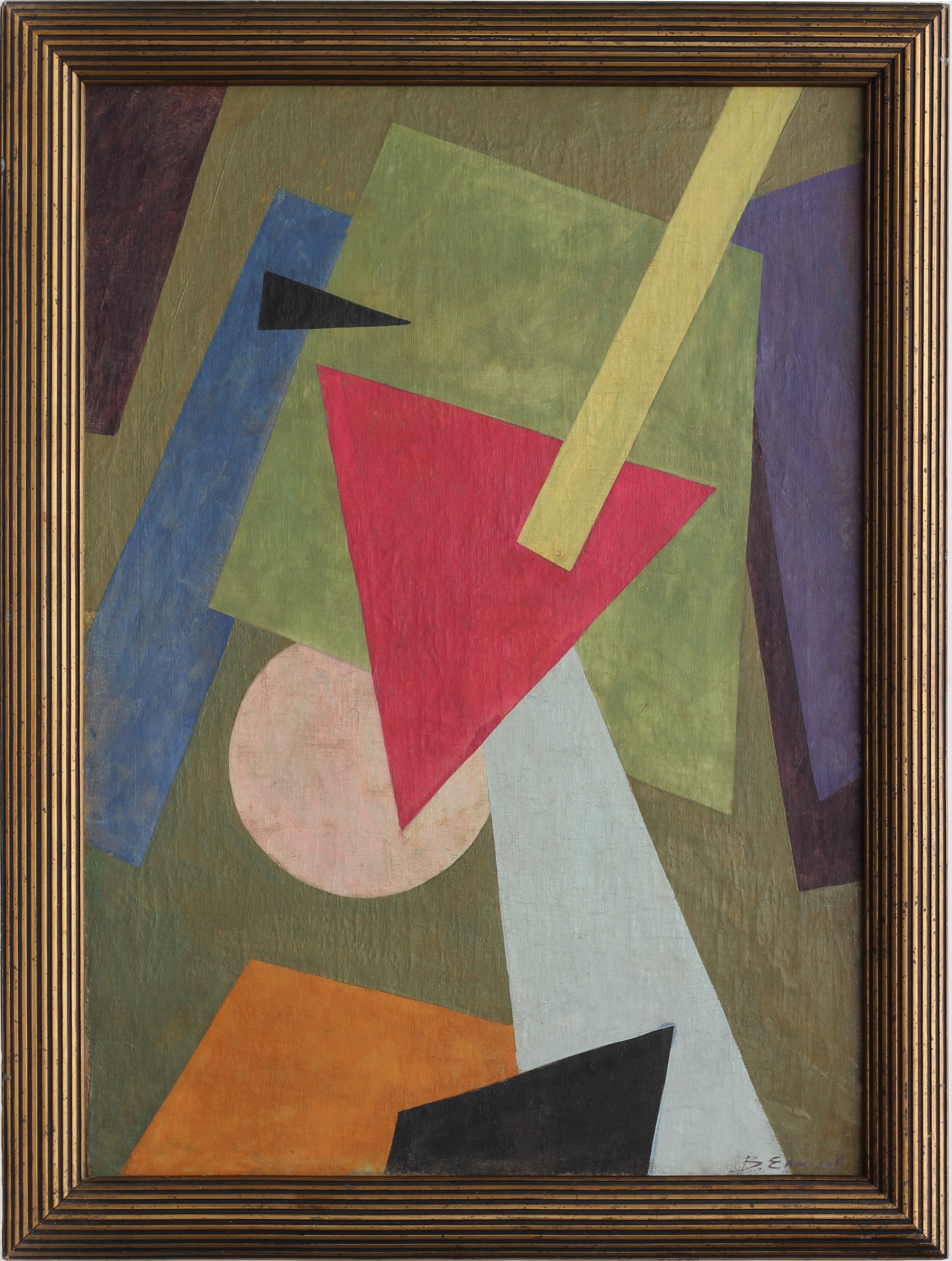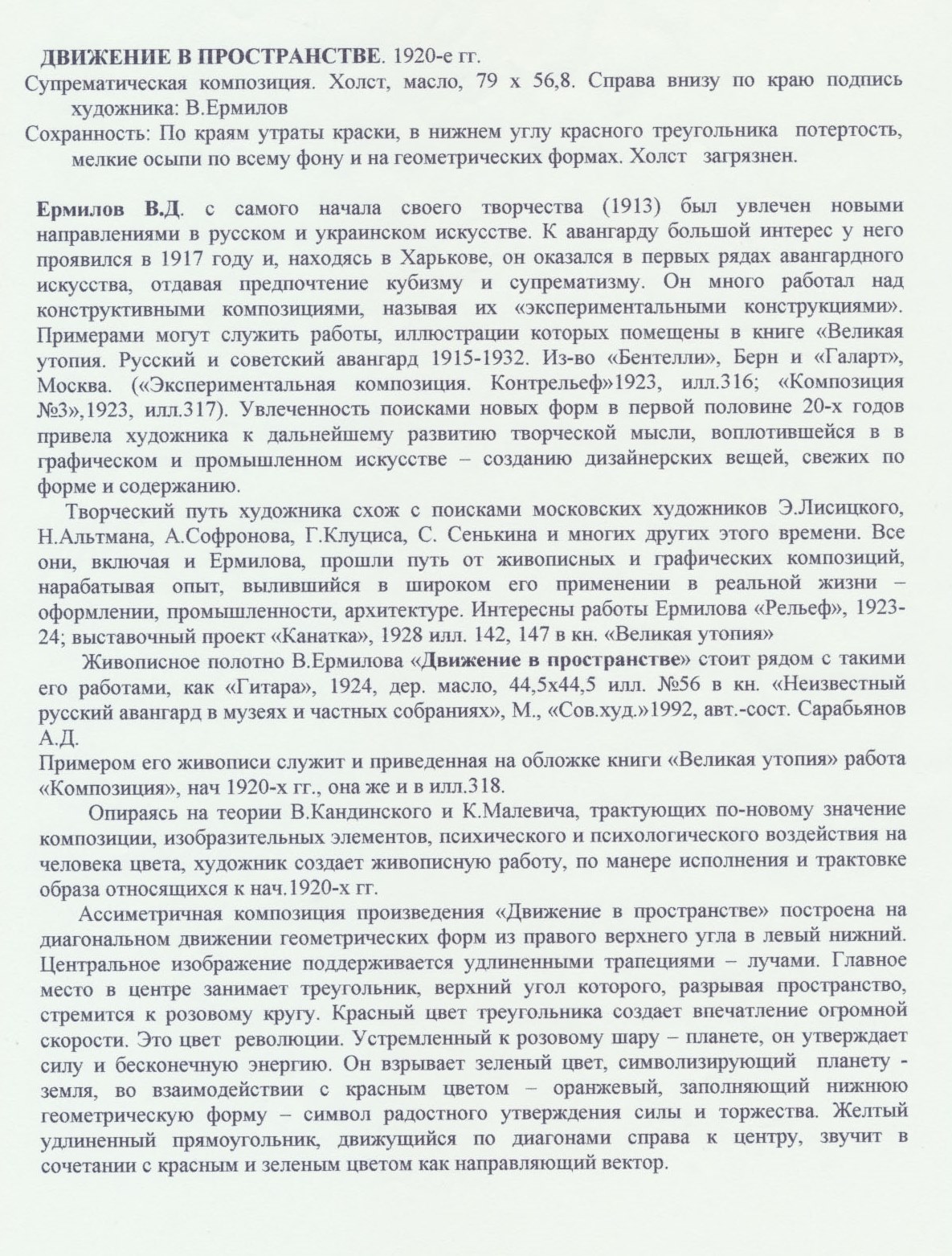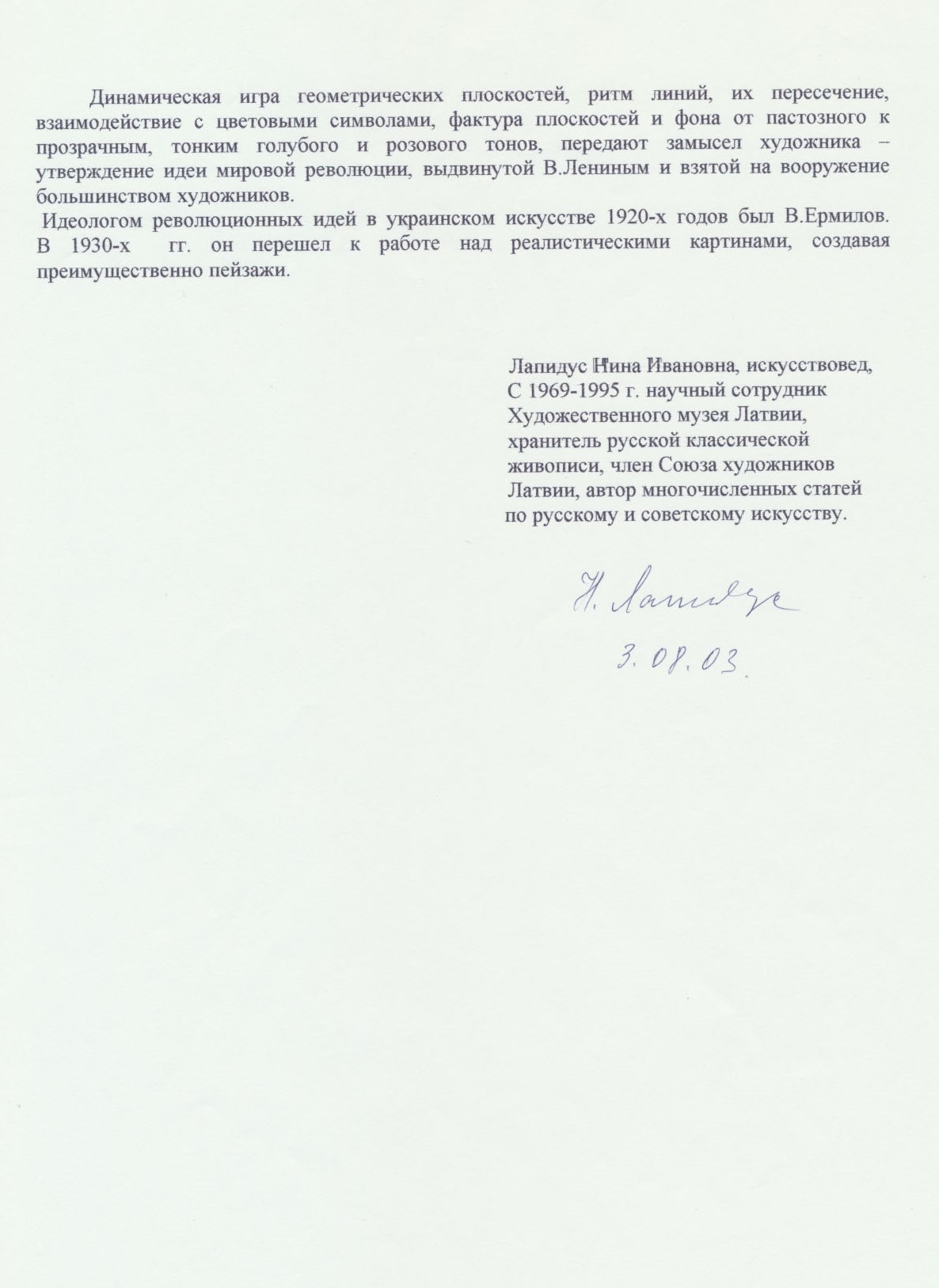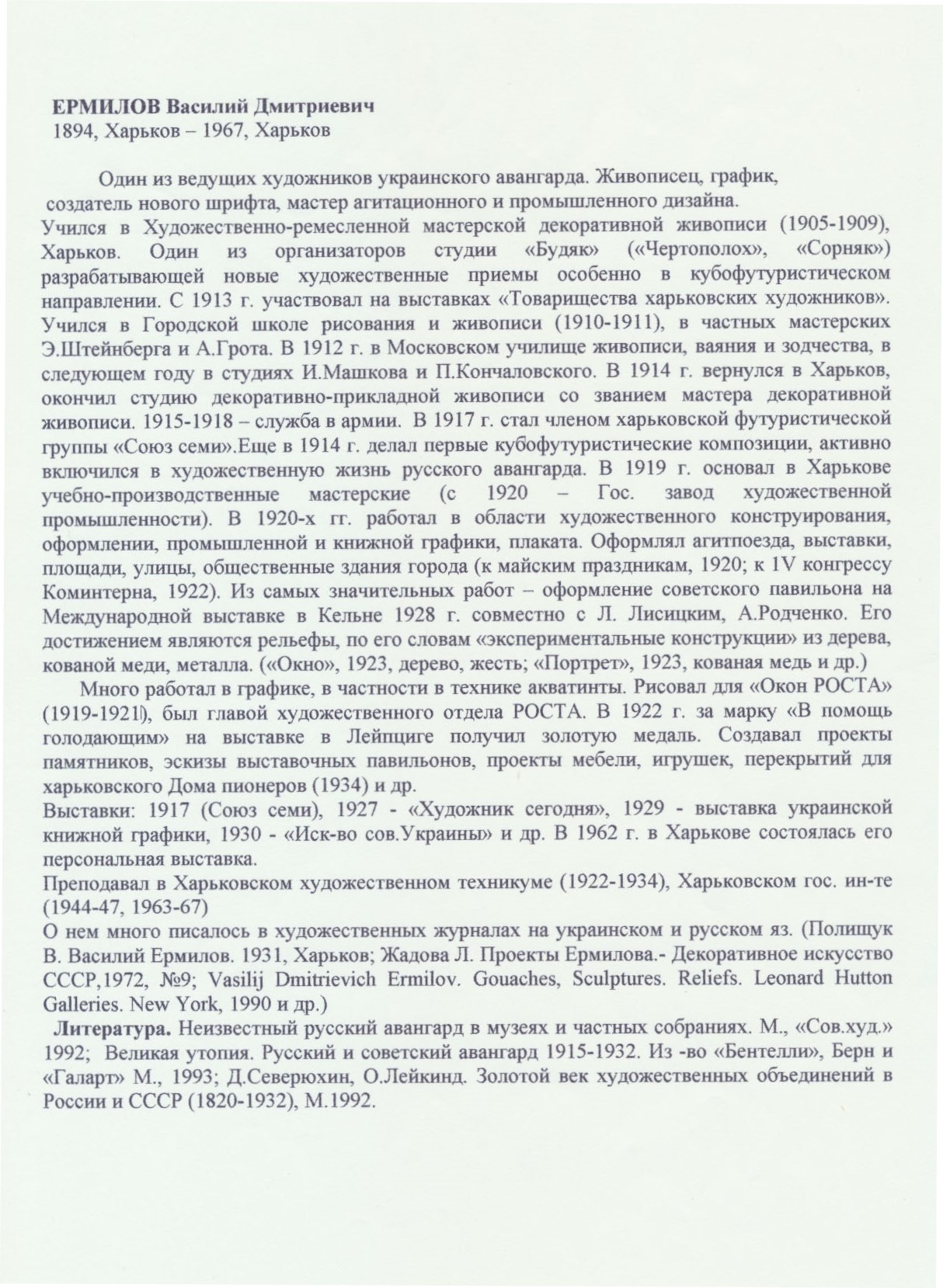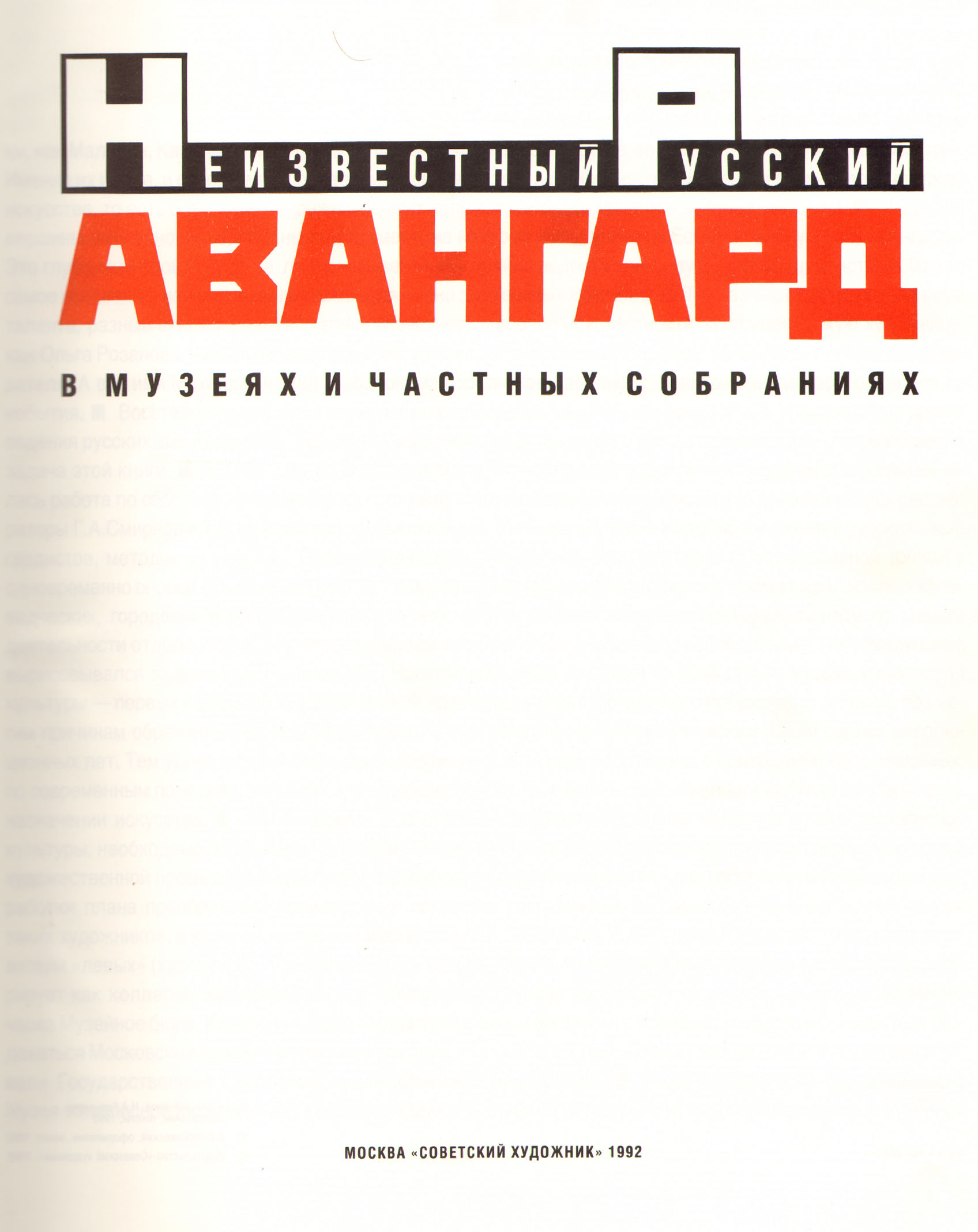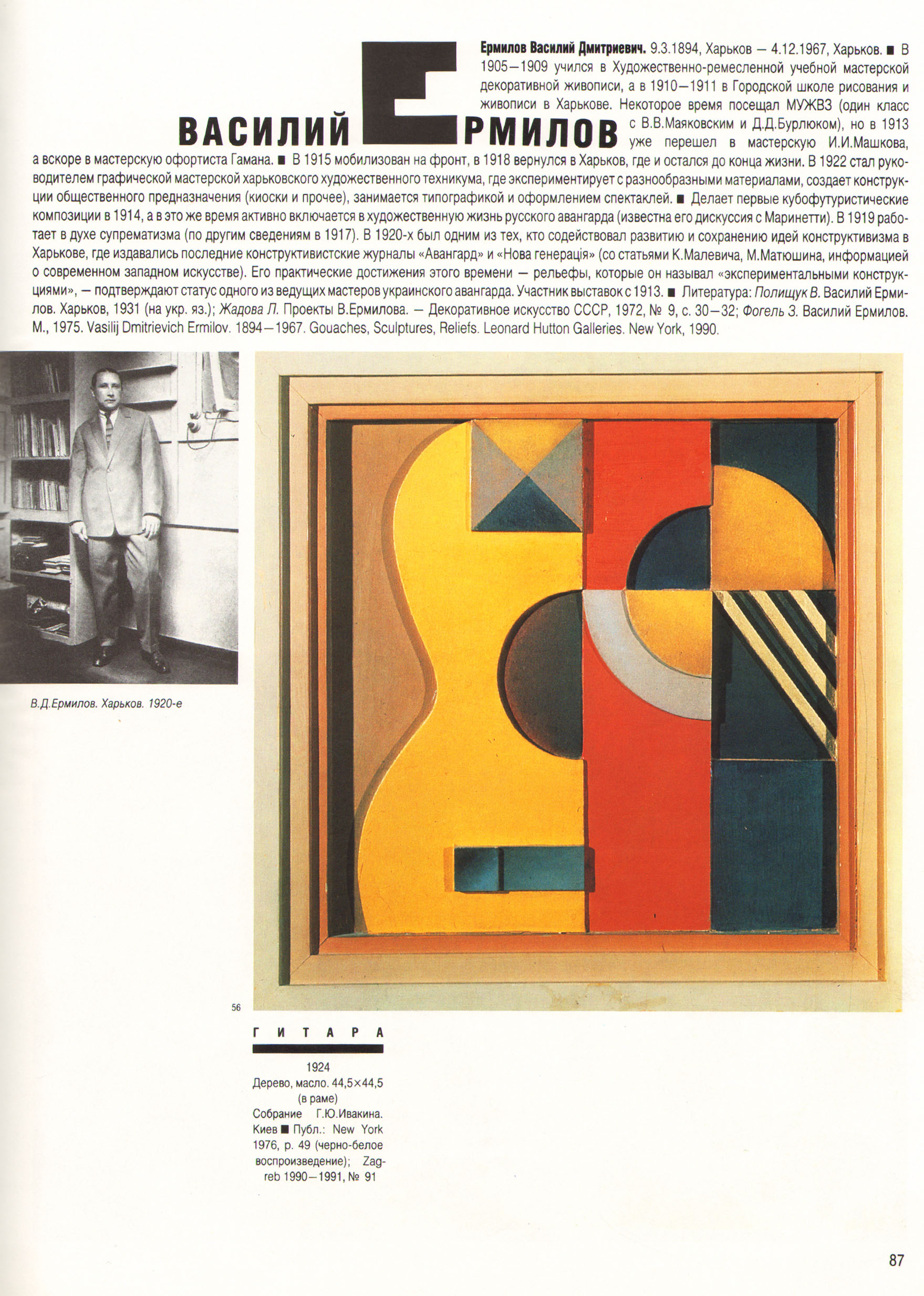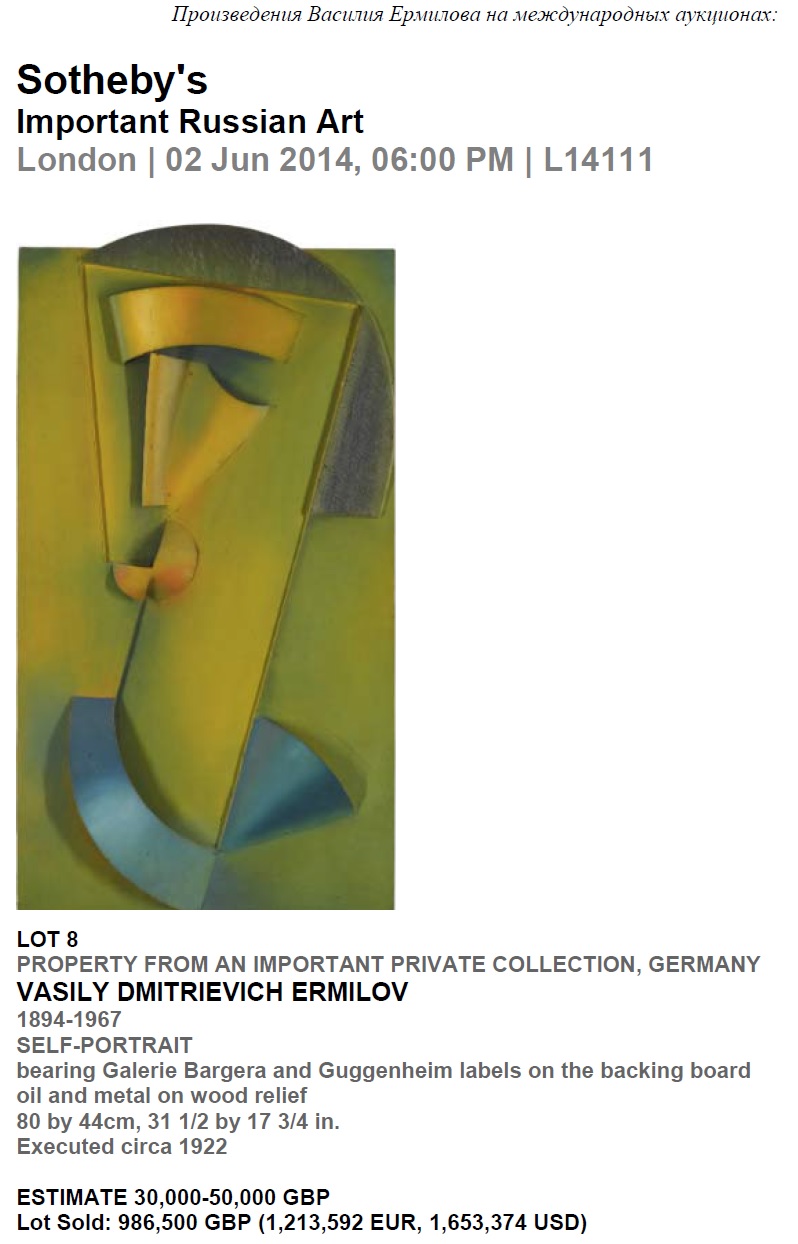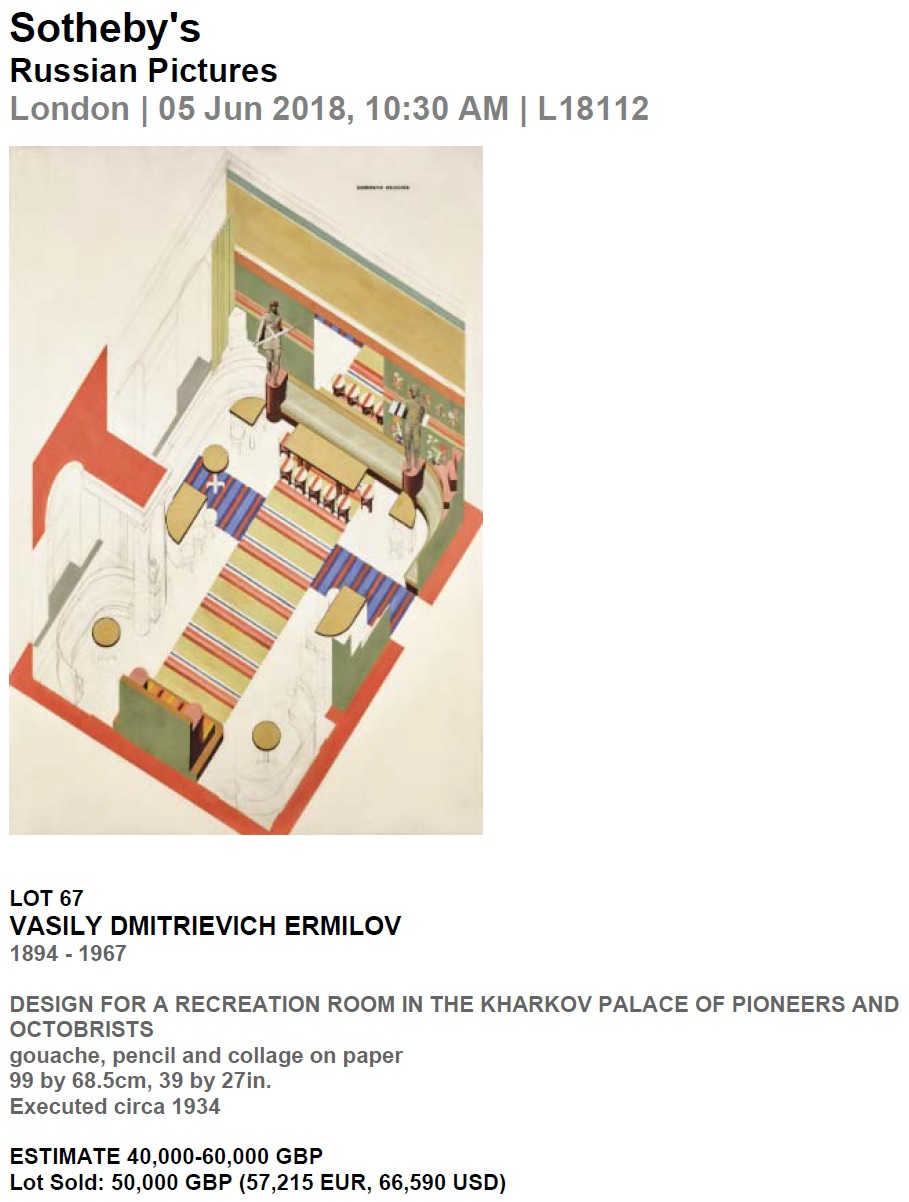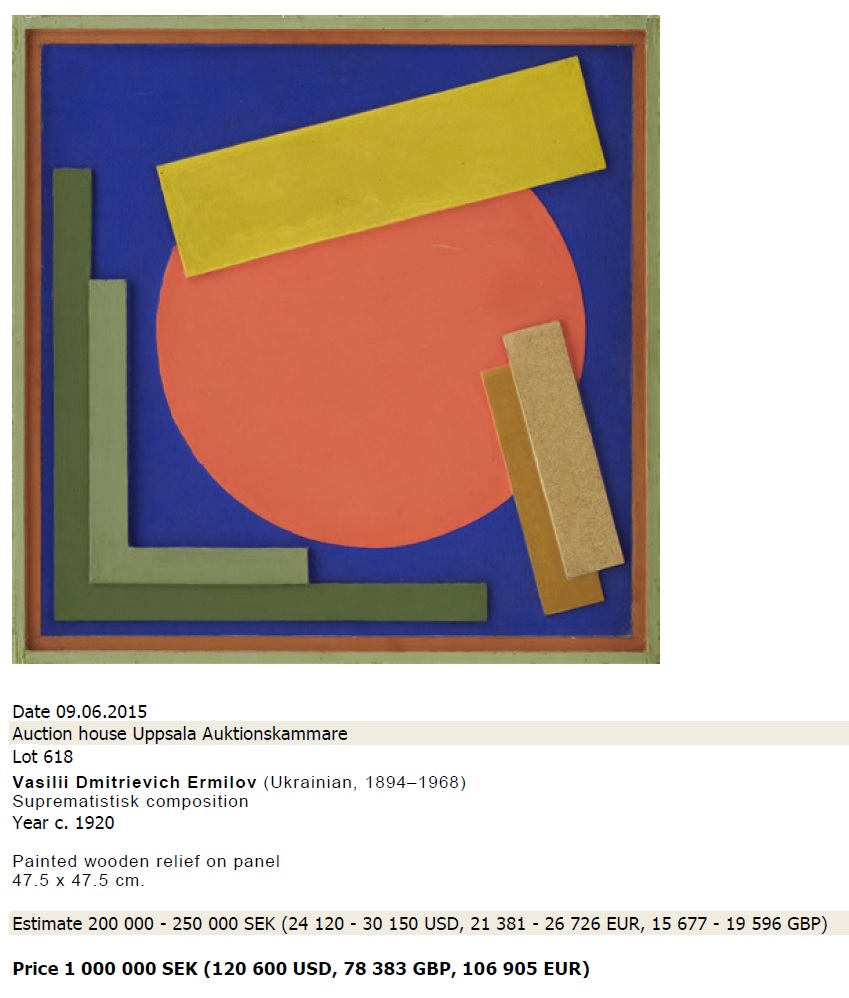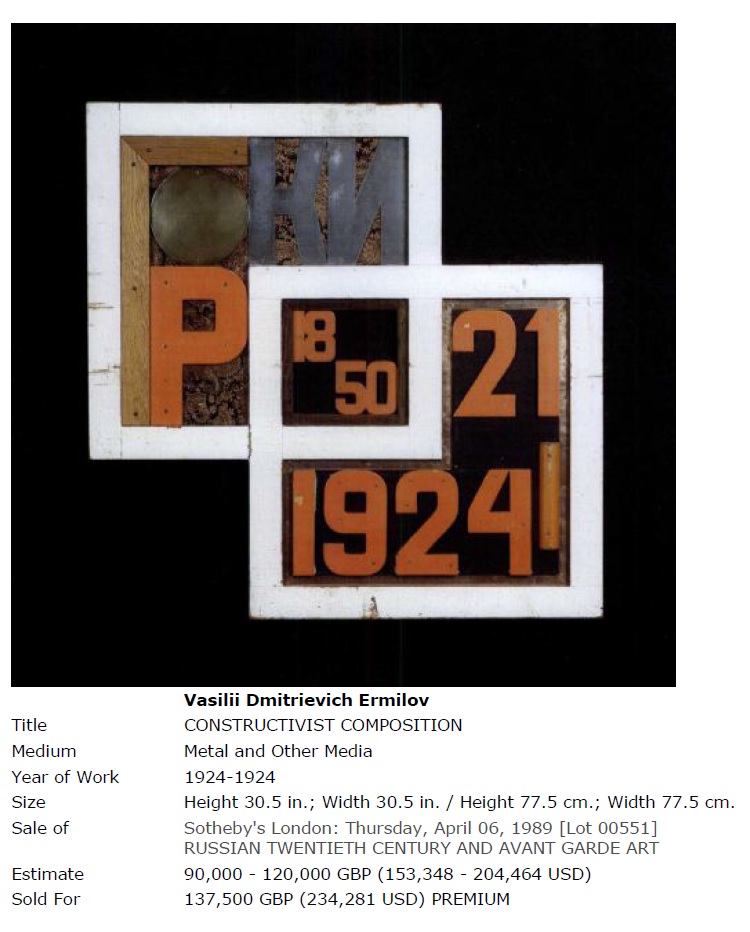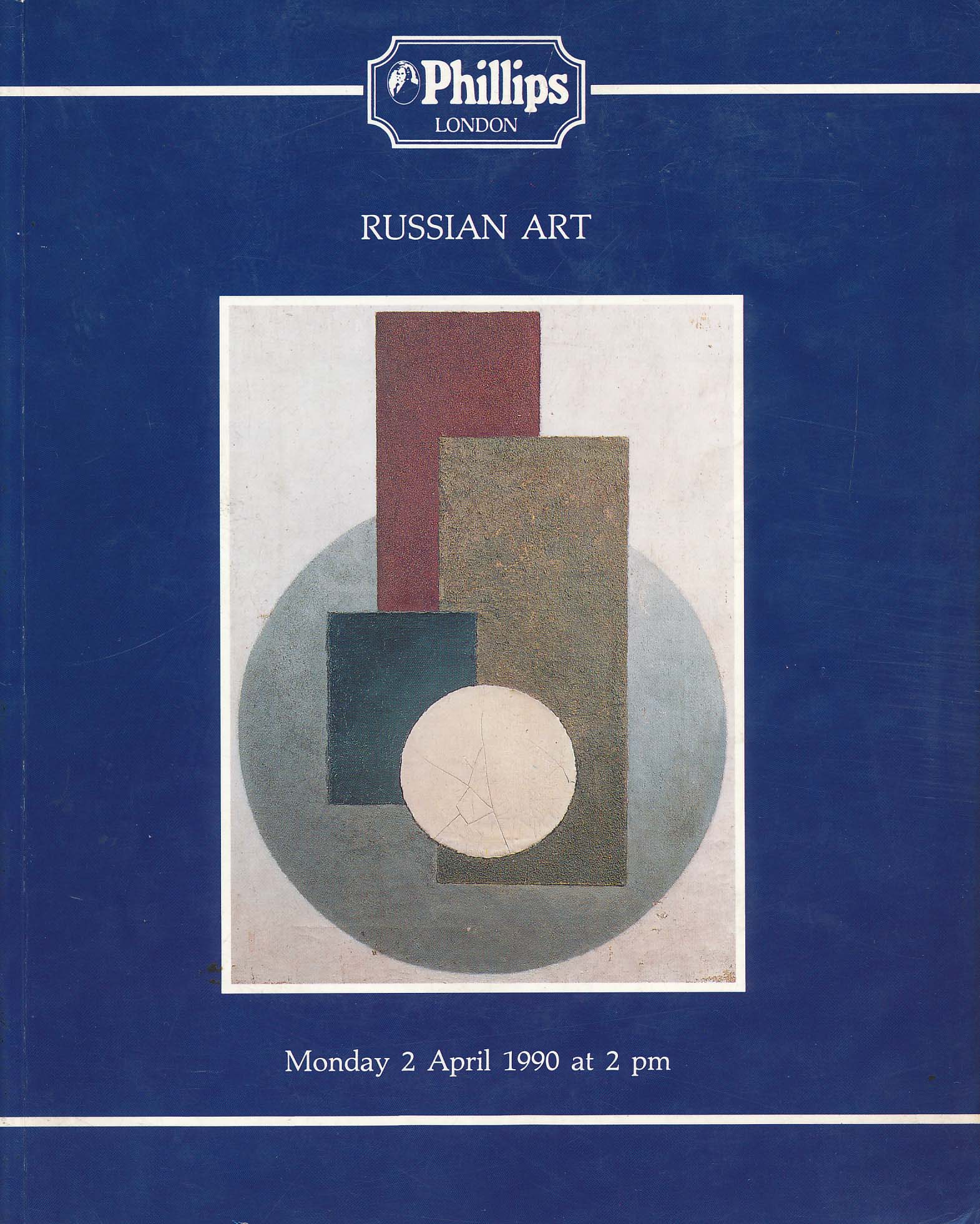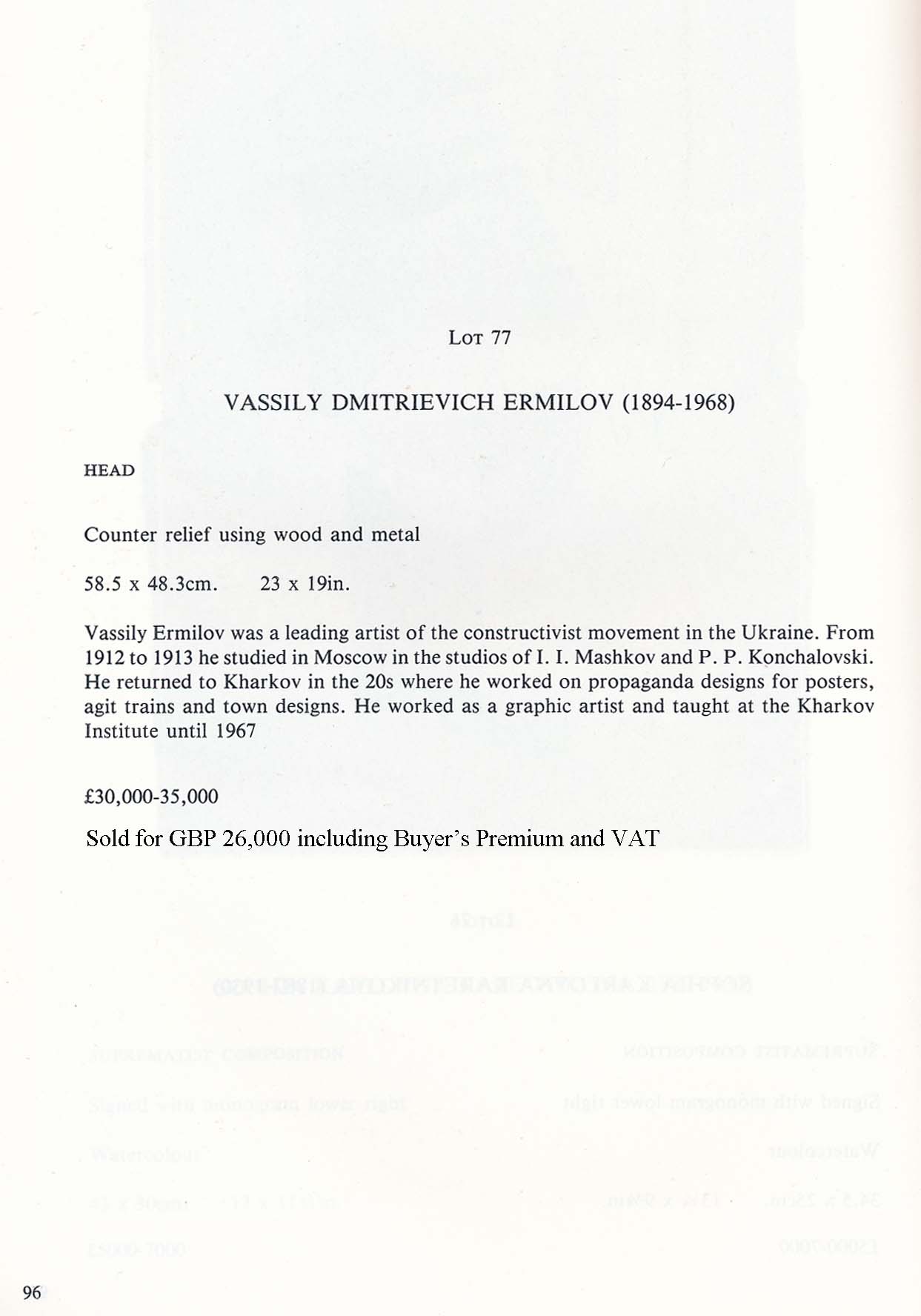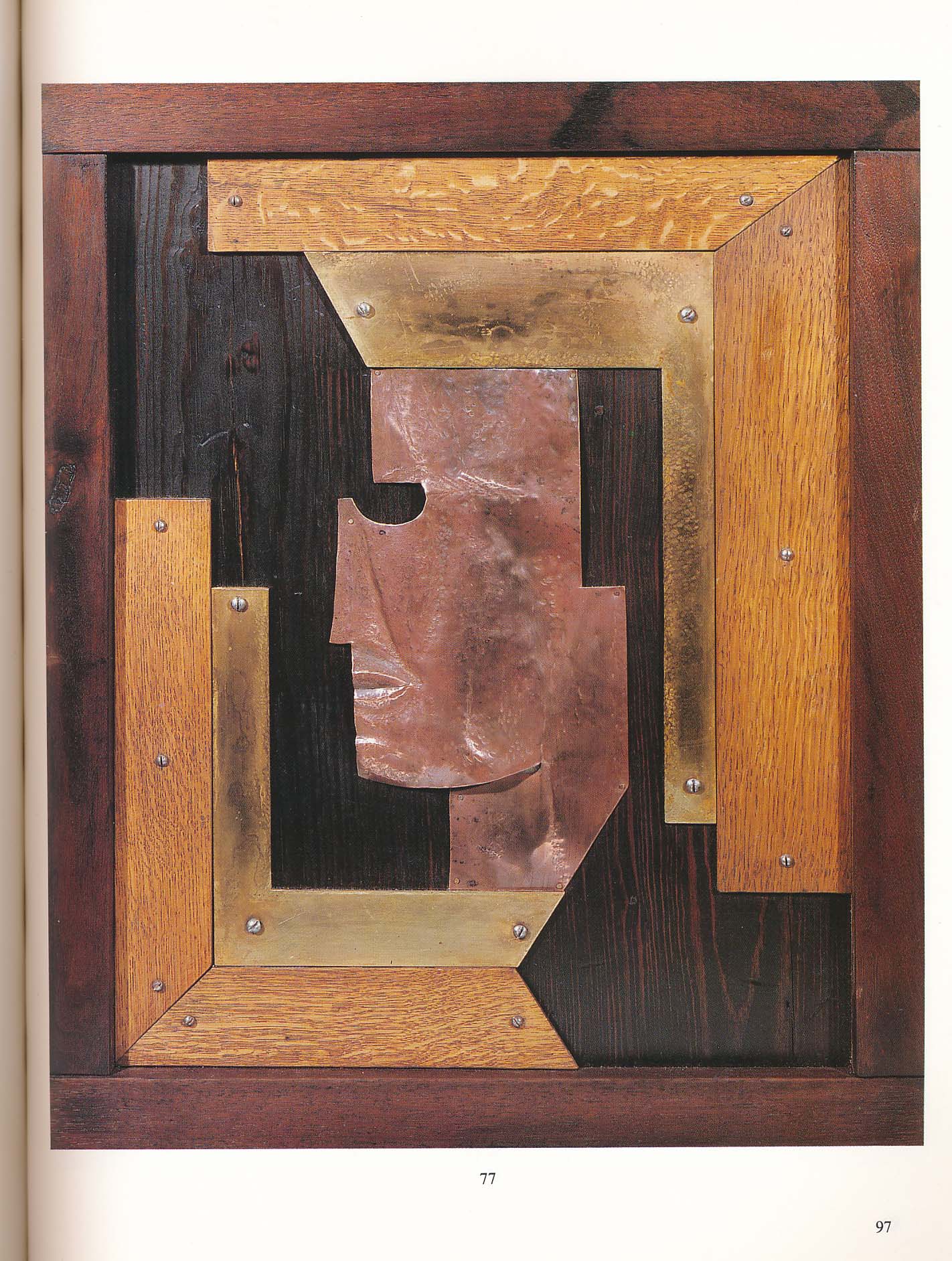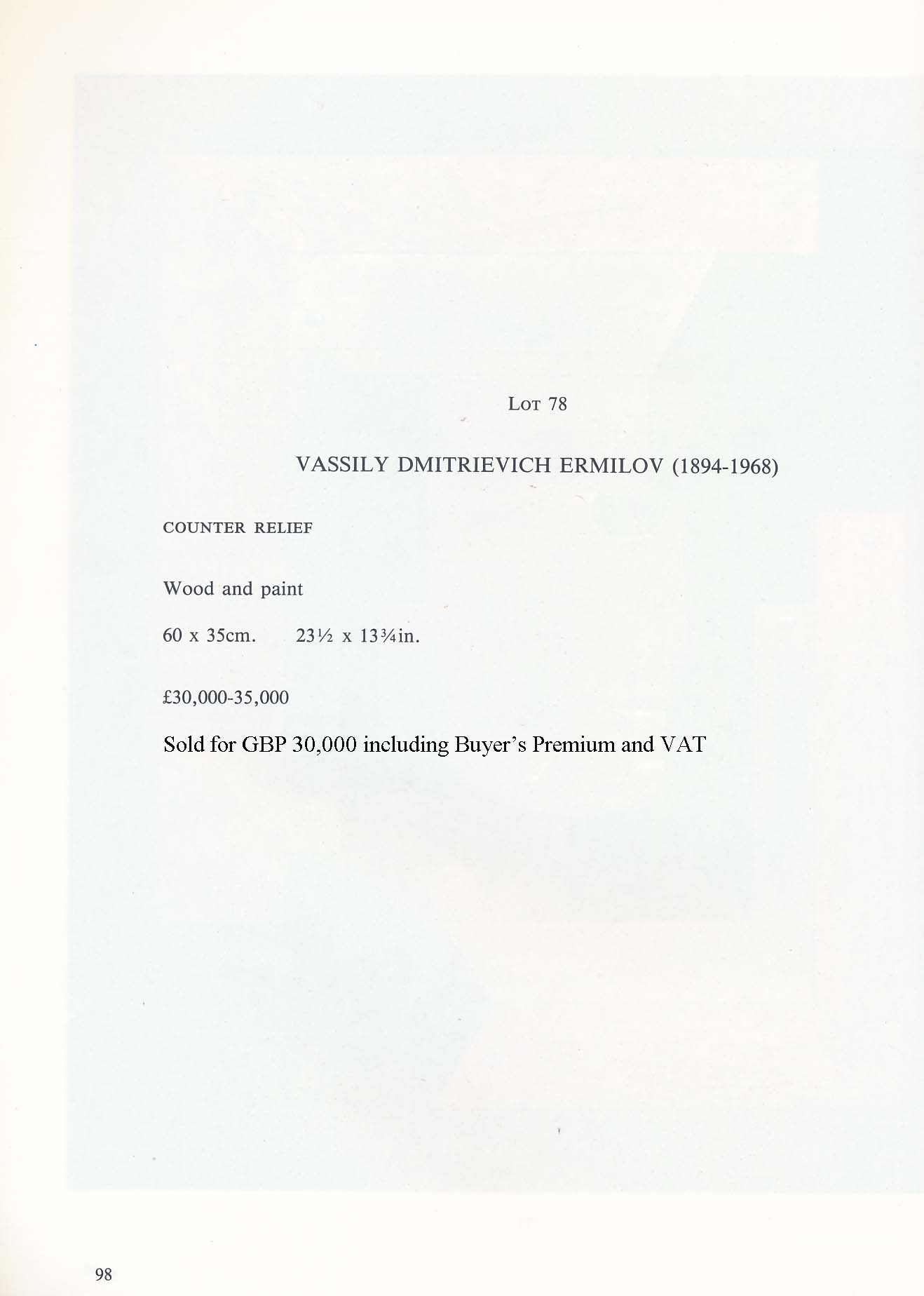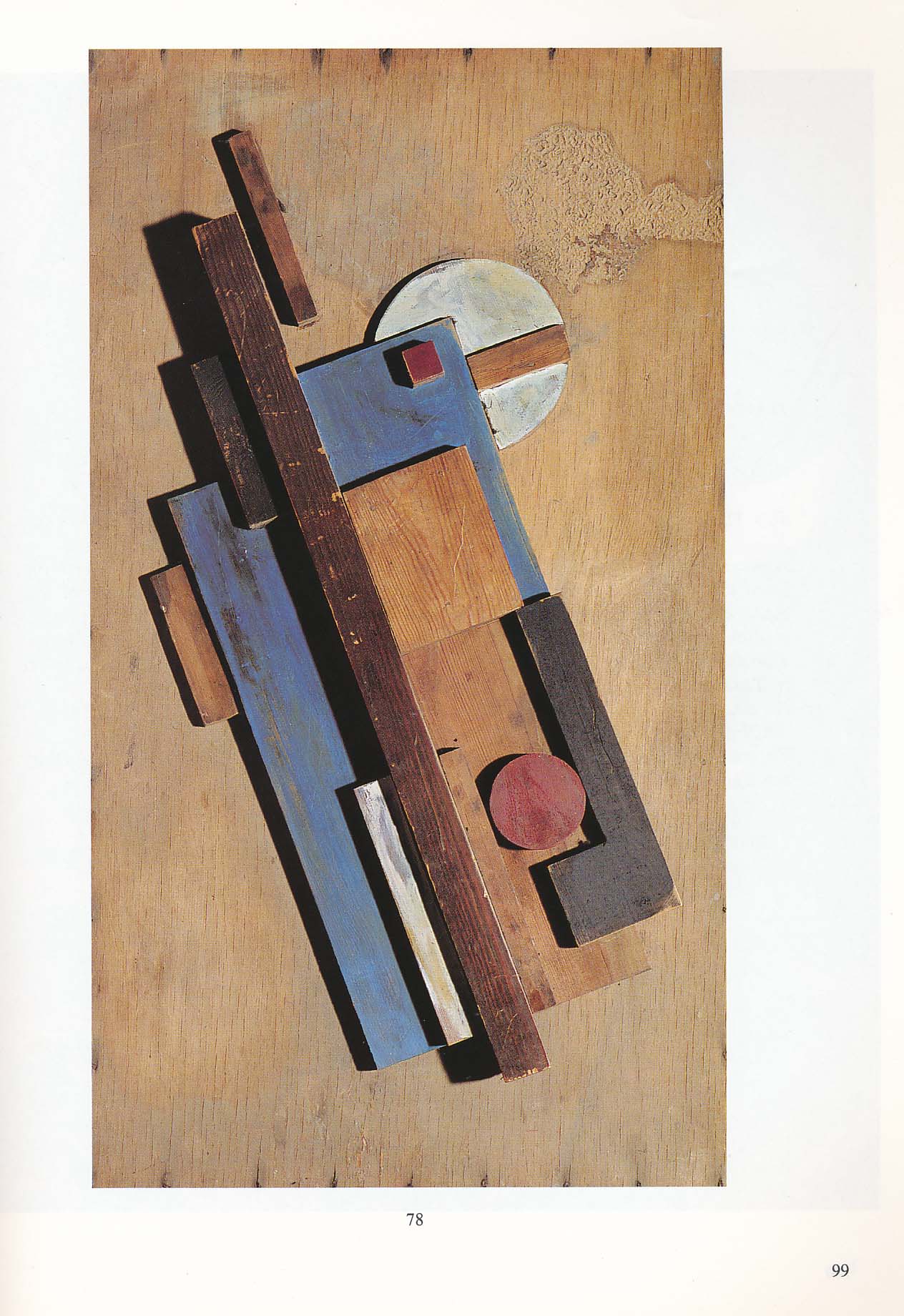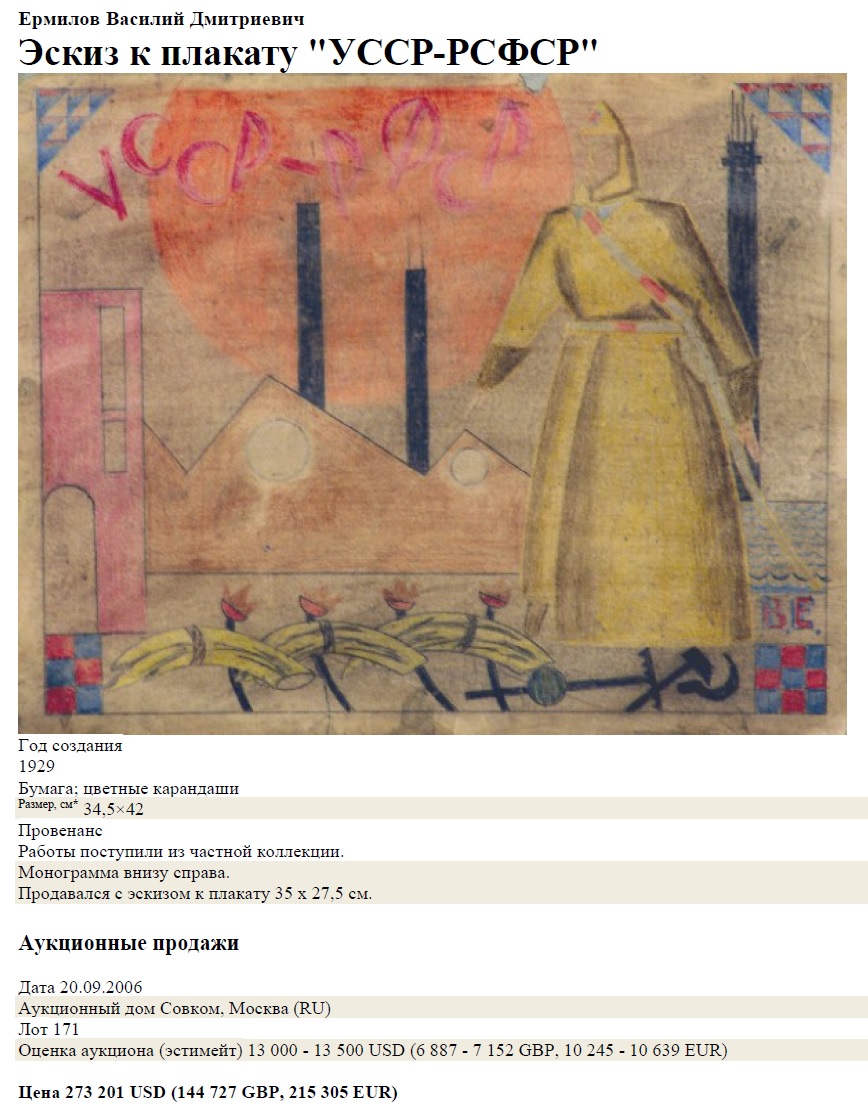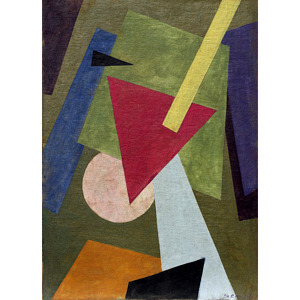Ermilov Vasily Dmitrievich
1894–1968
Painter, graphic artist, architect, scene-designer, master of decorative and applied arts.
Vasily Ermilov was born to a family of a tailor. He studied at the parish school. He studied at Kharkov School of art and craft under the guidance of L. I. Trakal (1905–1909), graduated from the School with the title of apprentice of decorative painting. In 1910 he entered Kharkov Art School, but left the studies because of conservative teaching system. For some time he attended the studio of E. A. Shteinberg and A. N. Grot in Kharkov. At the same time he was engaged in interior painting; took part in painting of the facade of Kharkov Art School.
In 1911 Ermilov moved to Moscow; in 1912 he entered Moscow School of painting, sculpture and architecture (MUZhVZ), but did not finish the course. He attended the studios of I. I. Mashkov and P. V. Konchalovsky. Ermilov met V. V. Mayakovsky, V. V. Kamensky, V. V. Khlebnikov and other representatives of Moscow avant-garde.
In 1914 Ermilov returned to Kharkov. In 1915 he was called up for military service. At the same year he deserted from his regiment, and he was arrested and exiled to Central Asia. Ermilov participated in military campaign in Persia, where he was contused. Later he was awarded the St. George medal of the 4th degree. In 1918 Ermilov was demobilized, and then he returned to Kharkov.
Ermilov was a member of the futuristic group Semerka (or the Group of Seven, 1918). He was under the influence of V. E. Tatlin. Since January of 1920, Ermilov headed art section at the All-Ukrainian bureau of the Russian Telegraph Agency (UkROSTA). Since February he headed painting section at the Factory of industrial art, which later was reorganized in the State Industrial Art Workshops with active participation of Ermilov.
In early 1920s Ermilov was engaged in agitation design of the streets and squares of Kharkov to revolutionary holidays, to the meeting of delegates of the Second Congress Comintern (the Communist International). Ermilov worked on the design of the agitation train Red Ukraine. He was also engaged in poster art, created the panel Locomotives and factories at standstill, waiting for coal of Donbass at the Railway station square in Kharkov (1921). The artist also created sketches for the Windows of UkROSTA.
In mid 1920s Ermilov experimented with different materials and textures: he created concave reliefs from sheet metal in combination with different types of wood. Ermilov was engaged in industrial design (sketches of packing, matchboxes, and trademarks), book and magazine design. He created a series of type memorial plates, dedicated to V. I. Lenin. Ermilov together with A. Gladkov and M. L. Mane-Katz took part in publication of the album Seven Plus Three, designed the magazines Kolosya (“Ears”, 1918), Puti Tvorchestva (“Ways of Creation”, 1918), Avant-garde (1920s–1930s), Culture and Propaganda (1933), and wall newspaper Kanatka (“Aerial Cableway”, 1928). He also designed covers for the books Ladomir by Velimir Khlebnikov (1920), Vasyl Yermilov by V. L. Polishchuk (1931), Tsushimaby A. S. Novikov-Priboy (1933) and others.
In 1930s Ermilov was engaged in interior design of Kharkov Pioneer Palace (1935), of the pavilion of the Ukrainian SSR (the Ukrainian Soviet Socialist Republic) at the All-Union Agricultural Exhibition (VSKhV; 1938–1939; together with A. G. Petritsky).
In early 1930s Ermilov was accused of formalism, but he continued to work. He created the wall painting design for the T. G. Shevchenko’s room at Kharkov State Academic Opera and Ballet Theatre (1939), took part in design of Kharkov Theatre Museum.
In 1950s–1960s Ermilov designed a lot of propaganda rooms at the factories, so called Krasny Ugolok (“Place of Honor”). He was also engaged in visionary architecture (Monument of Leninist Epoch, 1961; project of Picasso Memorial Museum, 1967).
Ermilov delivered lectures at Kharkov Art Institute (1922–1935, 1963–1967).
Since 1909 Ermilov participated in the exhibition of the Association of Kharkov artist (since 1914 — member of the Association). Since 1927 he was a member and exhibitor of the Association of Ukrainian Revolutionary Art (ARMU). He took part in many international exhibitions, including the exhibition in Leipzig (1922; gold medal), the exhibition of fine and decorative arts in Paris (1925), the exhibition Modern book art in Cologne (1928).
The personal exhibition of Ermilov was held in Kharkov in 1962. The retrospective exhibitions of the artist were organized in Kharkov in 1969 and in 1994.
Vasily Ermilov is one of the biggest masters of Russian, Ukrainian and Soviet avant-garde. In his early works the artist was under the influence of cubism, futurism and suprematism. Later he combined abstract motifs with the features of Ukrainian folk art and traditional ornaments. Works by Ermilov are characterized by experiment in art, by search of new forms, laconism, colorful and decorative expressiveness.
Works by Vasily Ermilov are in many museum and private collections.
